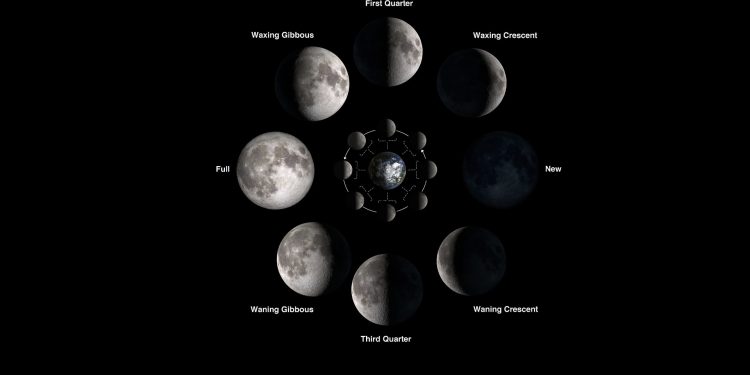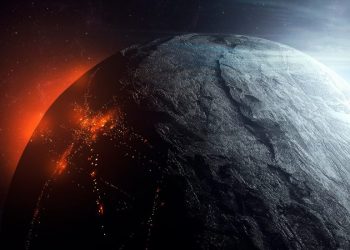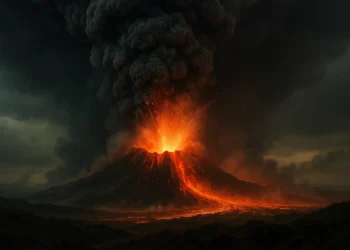The Moon’s ever-changing shape in the sky, known as its phases, follows a regular pattern over approximately 30 days. Learn what causes these phases and explore each of the eight main lunar phases.
This image, courtesy of NASA, presents a simplified diagram of the main lunar phases. While not drawn to scale, the diagram clearly shows the positions of the Moon as seen from above the Earth’s North Pole that correspond to the different phases of the Moon visible from Earth. The outer circle represents the actual phases visible from Earth, while the inner circle depicts the Moon’s positions in relation to the Sun, which is assumed to be situated far off to the right.
The Science Behind Lunar Phases
The phases of the Moon result from the changing positions of the Moon, Earth, and Sun. As the Moon orbits Earth, different parts are illuminated by the Sun. However, since the same side of the Moon always faces Earth, we only see a portion of the illuminated part, creating the various lunar phases.
Exploring the Eight Main Moon Phases
- New Moon: The Moon is nearly invisible, as the illuminated part points away from Earth. During this phase, the Moon is between the Sun and Earth. Occasionally, a solar eclipse occurs when the Moon lines up with the Sun. Solar eclipses happen 2 to 5 times a year on average.
- Waxing Crescent: A small, crescent-shaped sliver of the Moon becomes visible as it moves in its orbit. We only see the edge of the illuminated part, appearing curved due to the Moon’s roundness.
- First Quarter: Half of the Moon’s illuminated surface is visible from Earth, or one-quarter of the total Moon’s surface.
- Waxing Gibbous: When over half of the Moon’s surface visible from Earth is illuminated, it is called a Gibbous Moon.
- Full Moon: The entire near-side of the Moon is illuminated when the Moon is on the opposite side of Earth from the Sun. Lunar eclipses don’t occur every full Moon due to the Moon’s tilted orbit around Earth, but occasionally, a lunar eclipse occurs when the Moon passes through Earth’s shadow.
- Waning Gibbous: Following the full Moon, the illuminated portion of the Moon visible from Earth begins to wane, or decrease in size. The Moon’s surface visible from Earth remains mostly illuminated during this phase.
- Third Quarter: Half of the Moon’s illuminated surface is visible from Earth, showing the opposite half illuminated at the first quarter.
- Waning Crescent: The final phase, when only a small sliver of the Moon is visible before it disappears and enters the new Moon phase once more.
PLEASE READ: Have something to add? Visit Curiosmos on Facebook. Join the discussion in our mobile Telegram group. Also, follow us on Google News.











